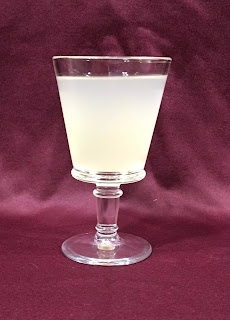Another entry from Maestra Isabel Maria under the category “Do you think because you are virtuous that there shall be no more cakes and ale?” She describes her ongoing spice box project:

“As I like to “play house” at Canterbury Faire, (rather than consider myself as going “on campaign” or “on pilgrimage” etc) I am trying to make sure all the items I regularly use are persona-appropriate so that I no longer need to hide items away in my tent. One thing that annoyed me last year were modern cardboard spice boxes sitting on my work surface. So, with regard to keeping valuable spices secure and yet convenient for use, I once again asked “what did they use in period?”, which lead to, what I assume is a wee spice box (below right), shown in the 1570 Scappi manuscript.

Although I have been unable to find an equivalent in a Spanish resource, making do with an item from a neighbouring area (Italy), with which Spain had significant commerce, seemed reasonable.
My Version: Collation of this project began with the careful shopping for a suitable box and bottles. The box is one for transporting essential oils, so had the small compartments already fixed in place. I chose corked bottles of brown glass, because they were available, affordable and, most importantly, fit in the box compartments. (That the darker colour would help reduce the amount of light reaching the expensive spices is a bonus.)
As for the spices contained in the box, I have chosen only those spices used in the specific 16th century English and Spanish recipes I like to cook, namely:
- Anise
- Black pepper
- Carraway
- Cinnamon quills
- Cloves
- Ginger
- Mace
- Nutmeg (and grater)
- Salt
- Saffron
- Sugar cone
I still have some empty spots for other spices that I acquire as my repertoire of recipes increases, or for mysterious spices like grains of paradise, long pepper and galingale etc.
Verdict: First used on the spiced water project where it proved convenient, although I’m looking forward to see how it works at Canterbury Faire.
I suspect I will need to find a way to label the bottles for ease of use, probably on the top of the cork lid since I don’t want to have to lift each bottle out to see what is in it, once it gets a little empty. Similarly, I’m not overly happy with the plain corks securing each bottle as they seem a little… unfinished compared to the period illustration.”
Resources
- “The Opera of Bartolomeo Scappi (1570): L’arte Et Prudenza D’un Maestro Cuoco”
- “English Huswif’s Jewel” by Thomas Dawson (1596)
- “Libre del Guisados” by Roberto de Nola (a Spanish edition of Libre del Coch), published in 1529 , translated by Lady Brighid ni Chiarain










